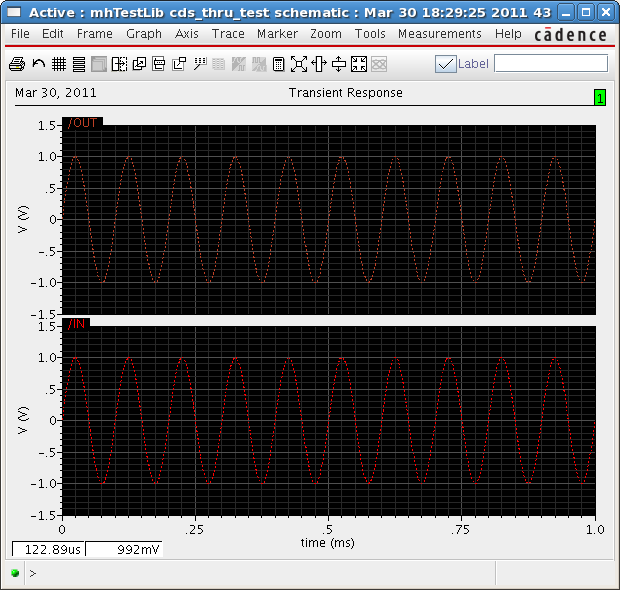How to short two nets in a schematic
Reference: Cadence Help → IC → Virtuoso Schematic Editor → Virtuoso Schematic Editor L User Guide → 3 Creating Schematics → Adding Patchcords Using the Add Instances Form → See Note about cds_thru in basic library at end of section.
It is sometimes desirable or necessary to short two nets in a circuit using Virtuoso Schematic Editor. The traditional solution is to name the net at the top-most hierarchical level schematic so that only one net is created and named. A more flexible solution is to use the Cadence symbol cds_thru from the basic library to create a short between the two nets.
Note, the NCSU Design Toolkit replaces the basic library from Cadence with its own which may not have the cds_thru cell. To add this library to your CDS project with the name basic_cds, add the following line to the cds.lib file:
DEFINE basic_cds $IC/tools/dfII/etc/cdslib/basic
In your schematic, left click Schematic Editor: Create → Instance... (bind key <i>). Then select the cds_thru cell from the basic (or basic_cds) library. The window should look as shown below:
Left click in the schematic to place the symbol. Adding a sine wave transient voltage source, a 10 pF capacitor, and the IN and OUT labels, we get the following schematic:
In the schematic, the IN net is shorted to the OUT net. Simulation waveform results verify this as shown below:


